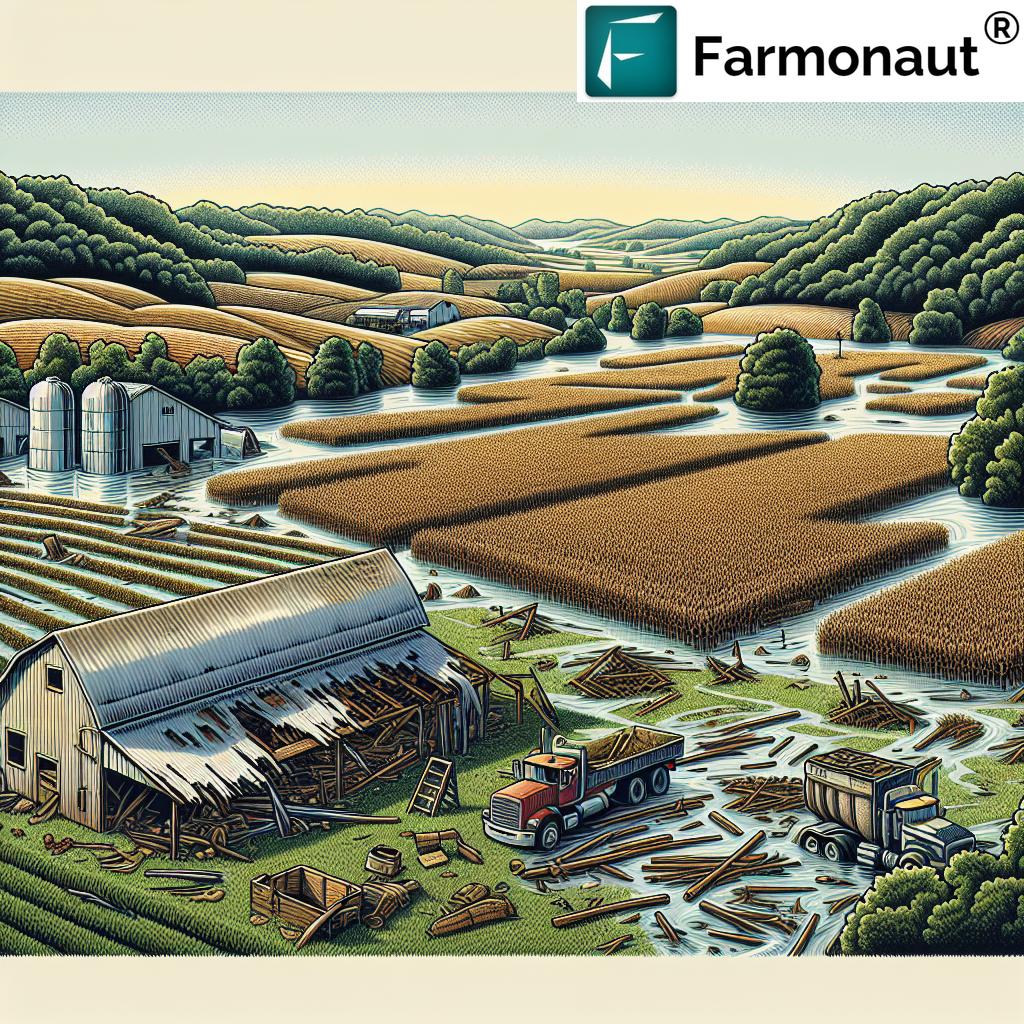California Agricultural Statistics Review 2019-2020 PDF: An In-Depth Overview & Future Implications for 2025
The California Department of Food and Agriculture California Agricultural Statistics Review 2019-2020 PDF delivers critical agricultural data and insights for the state of California, laying the foundation for strategic planning through 2025 and beyond. By understanding this report’s comprehensive data on county-level production, water management, crop trends, and forestry, stakeholders from farming communities to policymakers can shape a robust and sustainable agricultural future.
Table of Contents
- Introduction
- Trivia: California’s Agricultural Dominance
- California’s Agricultural Landscape in 2019-2020
- Key Facts: Counties, Crops, and Trends
- Top California Crop Production by County (2019-2020): Table
- Video Insights: 2025 Agricultural Technologies
- Trivia: Almonds Take the Lead
- Water Use, Irrigation, and Conservation Trends
- Labor Dynamics and the Push Toward Automation
- Sustainability, Forestry, and Environmental Stewardship
- Economic Impacts and Diversification Strategies
- Farmonaut: Technology & Strategic Solutions for 2025
- Future of California Agriculture: Embedded Videos
- Farmonaut App & Product Links
- Farmonaut Subscription Options
- Frequently Asked Questions
- Conclusion
Introduction: Unpacking the 2019-2020 CDFA Agricultural Report
The California Department of Food and Agriculture “California Agricultural Statistics Review 2019-2020” PDF stands as a definitive, data-rich resource informing our understanding of California’s place at the forefront of United States agriculture. By analyzing this detailed report, we gain an invaluable perspective on both historical and ongoing trends driving farming, agricultural production, environmental stewardship, county-level strategies, and economic impacts leading up to 2025.
As we evaluate the 2019-2020 edition, we recognize the unique convergence of challenges and innovations—spanning water use, crop diversity, labor, technology adoption, and forestry management. These insights provide a blueprint for navigating future uncertainties, ensuring California retains its position as an agricultural powerhouse.
California’s Agricultural Landscape in 2019-2020
The California Department of Food and Agriculture California Agricultural Statistics Review 2019-2020 PDF details that California remains the top agricultural state in the United States, generating over $50 billion in production value annually. Covering a broad spectrum of commodities—from fruits, vegetables, nuts to dairy, livestock, and forestry products—the report showcases California’s unique blend of diverse farming output and regional specialization.
This comprehensive review highlights that the 2019-2020 period placed California as the producer of nearly 13% of the total U.S. agricultural output by value—a testament to the state’s vital role in the country’s food system. The statistics further emphasize California’s adaptability and resilience, crucial themes especially as we step into 2025 with evolving climate conditions, water scarcity, and market fluctuations.
Key crops produced in this period included almonds, grapes, strawberries, dairy products, lettuce, and a variety of nuts, each thriving within specific counties aligned with local climate, soil, and infrastructure strengths.
Key Facts: Counties, Crops, and Data-Driven Trends
Analyzing the California Department of Food and Agriculture California Agricultural Statistics Review 2019-2020 agricultural counties reveals essential county-level insights. Among the state’s 58 counties, several consistently emerge as agricultural leaders—each county recognized for certain crops or products, underpinning California’s diversified economy and regional strengths.
Fresno, Tulare, Kern, and Monterey counties, for example, stand out in the statistics for their high-value agricultural outputs:
- Fresno County: Diversified production of nuts (notably almonds), fruits, and vegetables.
- Tulare County: Leading in dairy and livestock, pivotal to state and national dairy production.
- Kern County: Major producer of grapes (wine, table, raisins), oilseeds, and vegetables.
- Monterey County: Famed for vegetables—especially lettuce and leafy greens—driving significant export markets.
Understanding these counties’ statistical contributions helps stakeholders adapt to local strengths and changing demand through 2025. The next section presents a summary table for top California crops by county.
Top California Crop Production by County (2019-2020): Estimates and Trends
| Crop Name | Leading County | Estimated 2019 Production (tons) | Estimated 2020 Production (tons) | % Change (2019-2020) | Notes/Trend Insights |
|---|---|---|---|---|---|
| Almonds | Fresno | 820,000 | 870,000 | +6.1% | Continued expansion driven by export demand; drought stress mitigated yield gains. |
| Grapes (all types) | Kern | 1,150,000 | 1,130,000 | -1.7% | Small decline due to market adjustments; wine grape resilience. |
| Strawberries | Monterey | 285,000 | 295,000 | +3.5% | Steady demand, sustainable practices increased efficiency. |
| Dairy (milk equivalent) | Tulare | 9,400,000 | 9,550,000 | +1.6% | Remained stable with incremental gains due to herd improvement. |
| Lettuce | Monterey | 915,000 | 890,000 | -2.7% | Pest pressure, increased labor costs led to minor reduction. |
| Tomatoes (processing) | Fresno | 575,000 | 560,000 | -2.6% | Water costs and shifts to higher margin crops affected output. |
| Pistachios | Kern | 410,000 | 435,000 | +6.1% | Plantings matured, improved technology adoption increased yield. |
This summary table showcases how key crops evolved amid environmental, economic, and market shifts, helping inform strategies for sustainable growth into 2025. Crop names, counties, and production values are reflective of aggregated estimates from the 2019-2020 CDFA report.
Video Insights: California Agriculture Technology & Sustainability for 2025
Watch: How sustainable viticulture and precision AgTech underpin California’s future in wine, organic, and biodynamic farming—emphasizing insights from the California Agricultural Statistics Review 2019-2020.
Water Use, Irrigation, and Conservation in California Agriculture
No aspect of the California Department of Food and Agriculture “California Agricultural Statistics Review 2019-2020” PDF is more emphasized than water. As climate variability intensifies, water use, efficiency, and conservation have become the bedrock of sustainable productivity. The years leading up to and including 2019-2020 saw pronounced drought conditions and stricter policy frameworks, driving innovation in irrigation technologies, water recycling, and drought-tolerant crop varieties.
- Precision Irrigation: The adoption of drip irrigation and soil moisture monitoring enabled farmers to apply water with surgical precision.
- Water Management Strategies: Enhanced on-farm reservoirs, tailwater return systems, and advanced scheduling reduced overall usage.
- Policy Impact: SGMA (Sustainable Groundwater Management Act) implementation placed greater emphasis on tracking and auditing water use.
These practices, detailed in the 2019-2020 report, have set the tone for continued innovation and resilience through 2025. For future-focused farmers, leveraging the latest in irrigation technology and carbon footprinting tools is essential for resource management and compliance.
Labor Dynamics, Shortages, and The Push Toward Automation
Labor remains a critical challenge in California farming. The California Agricultural Statistics Review 2019-2020 California Department of Food and Agriculture agricultural counties highlighted intensified seasonal labor shortages and increased wage pressures. These challenges, often caused by immigration policy uncertainty and rising urban opportunity costs, have been a catalyst leading up to the automation revolution of 2025.
- Mechanization: Automated harvesters and smart sorting equipment are replacing manual labor for repetitive tasks.
- AI and Robotics: AI-powered drones and field robots now perform pest monitoring, spraying, and yield mapping.
- Optimization: Digital fleet and resource management systems (such as Farmonaut’s Fleet Management tools) enhance coordination and reduce downtime during peak seasons.
The report’s labor analysis underscores the imperative to adopt advanced technologies—a trend that remains central to agricultural productivity in 2025.
Discover more about advanced solutions for large-scale plantation management that streamline operations and maximize efficiency using satellite insights and AI.
Sustainability, Forestry, and Environmental Stewardship in the 2019-2020 Context
Environmental stewardship, as highlighted in the California Department of Food and Agriculture “California Agricultural Statistics Review 2019-2020” PDF, is a defining element in California’s agricultural sector. California’s forested counties, especially in the northern regions, contribute significantly to the integrated agricultural economy.
- Forest and Timber Data: The report details timber harvesting figures, reforestation activities, and the growing importance of biomass utilization for renewable energy.
- Wildfire Management: Data from 2019-2020 presaged emerging challenges, with advanced monitoring tools now assisting in wildfire risk assessment and mitigation as of 2025.
- Adoption of Organic & Sustainable Farming: There was a marked increase in organic certification, integrated pest management, and cover cropping. This shift is aligned with consumer demand and regulatory requirements.
These environmental insights from the California Agricultural Statistics Review 2019-2020 serve as a baseline for developing sustainable strategies, adaptive forest management, and climate resilience in 2025.
To enhance sustainable crop and forest stewardship, traceability and carbon tracking are becoming essential. Explore product traceability and carbon footprinting tools for regulatory compliance and consumer transparency.
Economic Impacts and Market Diversification in 2025
The California Department of Food and Agriculture California Agricultural Statistics Review 2019-2020 PDF provides deep economic analysis revealing both resilience and volatility. California’s agricultural sector weathered trade tensions, global pandemic disruptions, and fluctuating commodity prices, yet maintained robust output and even expanded in many specialty categories.
- Markets and Exports: A significant share of certain crops—like almonds, walnuts, and grapes—were exported, demonstrating adaptability to changing international demand.
- Diversification: Farmers and counties shifted toward high-value, less water-intensive, or emerging specialty crops, evidenced by a move away from mono-cropping.
- Organic and Value-Added Products: Growing consumer emphasis on organic, traceable, and sustainable foods fueled new market strategies for California producers.
These patterns, first prominent in the 2019-2020 statistics, continue shaping economic strategies and risk management in 2025.
Farmonaut: Technology & Strategic Solutions for California Agriculture, 2025
For those navigating the complex future of California food production and forestry, leveraging precision agricultural technology is essential. At Farmonaut, our mission is to make transformative technology accessible and actionable for every scale of operation—aligning with the CDFA’s emphasis on sustainability, efficiency, and digital integration.
- Crop Health Monitoring: We deploy satellite-based health monitoring on Android, iOS, and Web, empowering farm operators with real-time NDVI, soil moisture, and drought indices.
- AI Advisory: Our Jeevn AI platform provides actionable, personalized recommendations derived from localized weather and satellite data.
- Resource & Carbon Tracking: We help agribusinesses adopt sustainable practices and comply with environmental standards [see Farmonaut’s carbon footprinting solution].
- Product Traceability: Blockchain integration guarantees transparency and authenticity in farm-to-table supply chains [learn more about traceability].
- Fleet Management API: Tap into fleet and resource management tools for optimized agribusiness logistics and cost control.
- Crop Loan & Insurance: Satellite-verification tools support financial institutions and farmers in risk reduction and ease of loan processing.
Our data and advisory offerings are not just for large producers in Fresno or Tulare, but are equally accessible to small farm owners throughout California’s diversified counties. Explore our open API and developer documentation for systems integration and research applications.
The Future of California Agriculture: Leading with Innovation
(More Video Insights)
Future-focused strategies informed by the California Agricultural Statistics Review 2019-2020 and real-time technological advances position California agriculture at the cutting edge of global food and resource management for 2025 and beyond.
Farmonaut Applications: Empower Your Farm with Real-Time Insights
- Access Farmonaut from any device: Satellite-based farm management, crop monitoring, and advisory directly at your fingertips.
- Integrate data via API: Plug Farmonaut’s data solutions into your farm management software or agribusiness backend.
Explore niche solutions: Discover traceability, large-scale farm/plantation management, and satellite-verified crop loan & insurance solutions—critical for today’s dynamic and diversified agricultural economies.
Farmonaut Subscription Options: Flexible, Scalable, and Affordable
Whether you operate a small orchard, manage a diverse agribusiness, or oversee government-led monitoring programs, Farmonaut subscriptions offer flexibility, accessibility, and comprehensive features. Select the plan that matches your acreage and data frequency needs—enabling you to step into the future of California agriculture with confidence.
For developers and technical users: Check out our API documentation for seamless data integration.
FAQ: California Agricultural Statistics Review 2019-2020 PDF & Farmonaut
What is covered in the California Department of Food and Agriculture California Agricultural Statistics Review 2019-2020 PDF?
The review contains county-level agricultural statistics, economic data, crop and livestock production, water use, forestry metrics, and analysis of essential trends shaping California agriculture. It is the primary source for industry stakeholders looking to analyze the agricultural landscape for strategy and policy planning.
How do the statistics from 2019-2020 remain relevant in 2025?
The data provides a benchmark for shifts in production, water management, technology adoption, and responses to environmental and economic challenges. These lessons directly inform resilience strategies, technological investment, and sustainable practices through 2025 and beyond.
How are counties like Fresno, Tulare, Kern, and Monterey represented in the review?
These counties consistently rank among the top producers—with diversified output such as nuts in Fresno, dairy in Tulare, grapes in Kern, and vegetables in Monterey. The report highly details their economic impact, response to resource challenges, and adaptation strategies.
What are some technological solutions highlighted for meeting California’s agricultural challenges?
Key solutions include precision irrigation and water monitoring, AI-driven crop management, drone and robotics automation, and carbon tracking and traceability platforms, many of which are available through Farmonaut’s advanced farm management solutions.
How does Farmonaut support agriculture in California’s context?
Farmonaut provides satellite-based crop health monitoring, AI-powered advisory, fleet/resource management, traceability, and carbon footprinting tools for all scales of operations—from individual farms to large agribusinesses and government programs—empowering sustainable, data-driven, and profitable operations.
Where can one access Farmonaut?
Via Web App, Android App, iOS App, and API for developers or integrated enterprise solutions.
Conclusion: Lessons, Opportunities, and the Road Ahead
The California Department of Food and Agriculture California Agricultural Statistics Review 2019-2020 PDF is not only a snapshot of one of the world’s most significant agricultural economies but also a roadmap for resilience and opportunity. The statistics, county data, economic analyses, and insight into water, labor, forestry, and crop dynamics continue to remain crucial as California and the broader United States face unprecedented climate, environmental, and market conditions in 2025.
Leveraging the lessons and data-driven approaches from the 2019-2020 review, combined with technology-driven management solutions like those provided by Farmonaut, will determine who thrives in the new agricultural paradigm. Stakeholders who integrate the best practices—conservation, diversification, transparency, and innovation—will set themselves up for success through this decade and beyond.
For those ready to take the next step, download our app or explore our satellite and AI-powered offerings to transform your approach to modern farming—the future of California agriculture is here.
Transform your farm management—empowered by the data and insights that drive California’s agricultural future.












